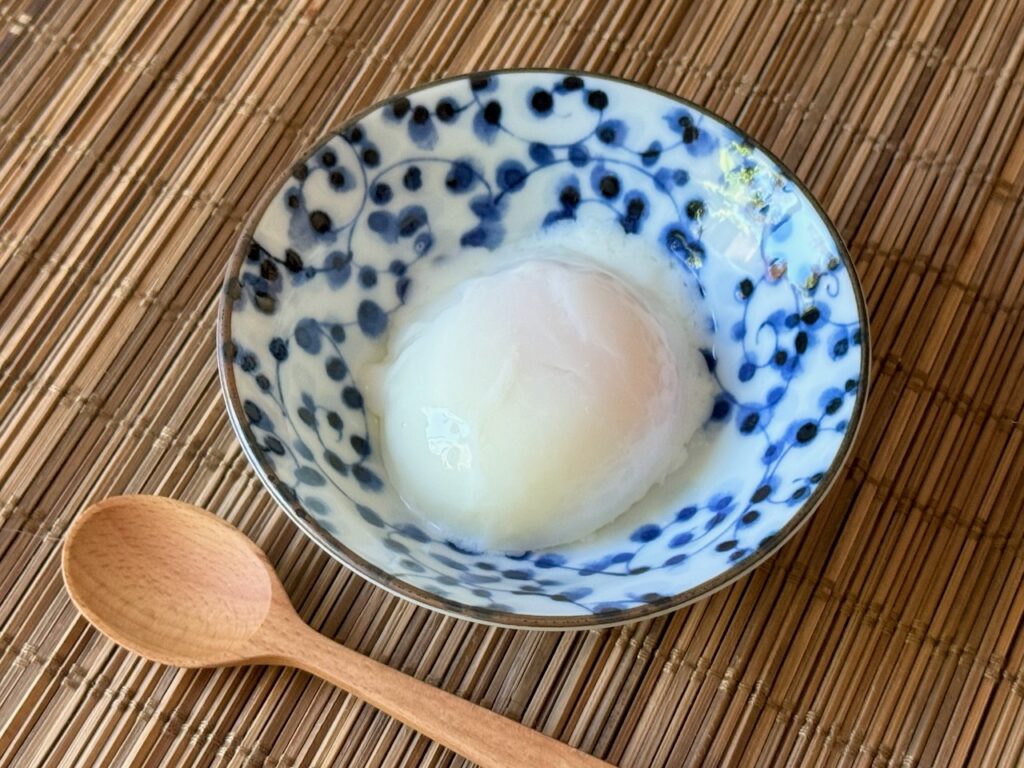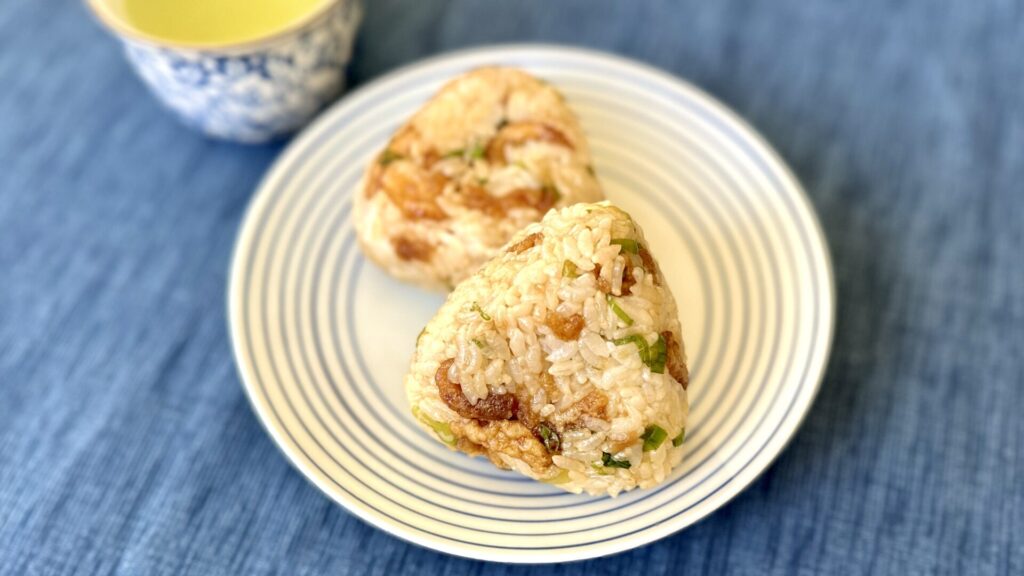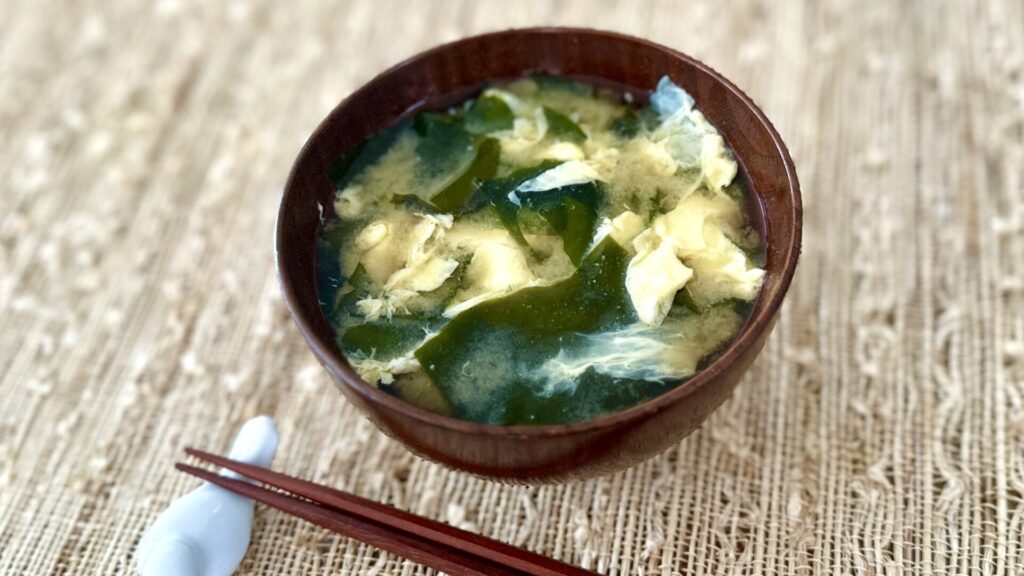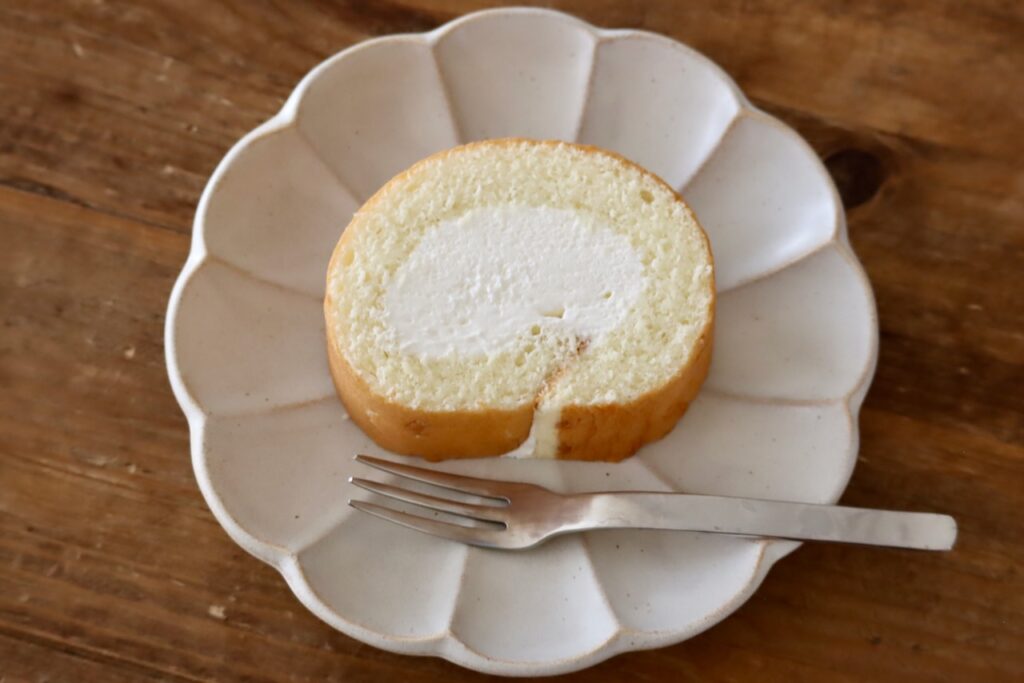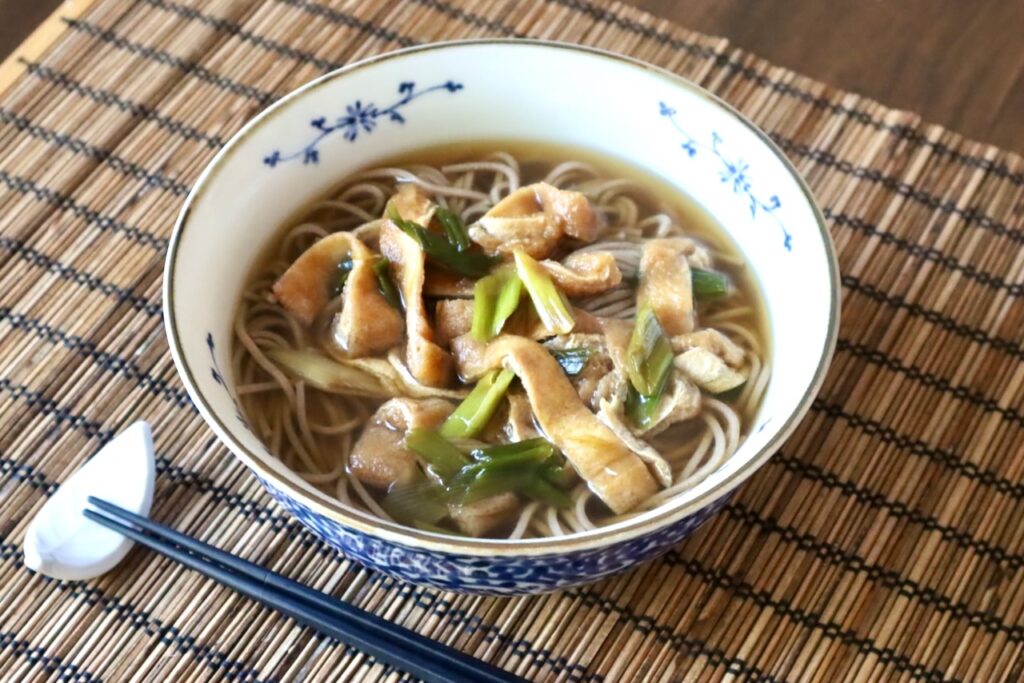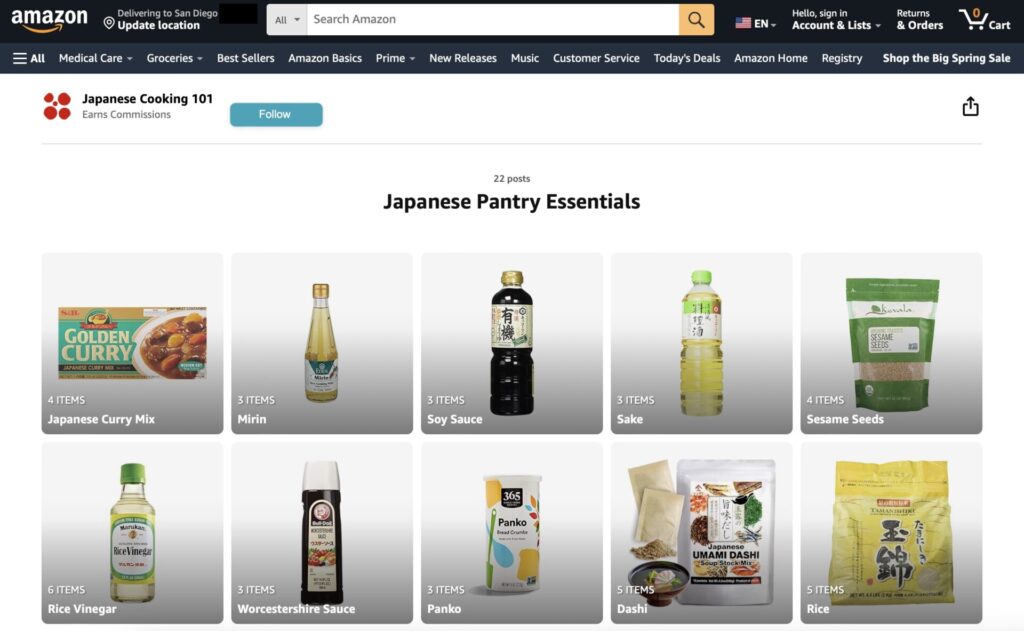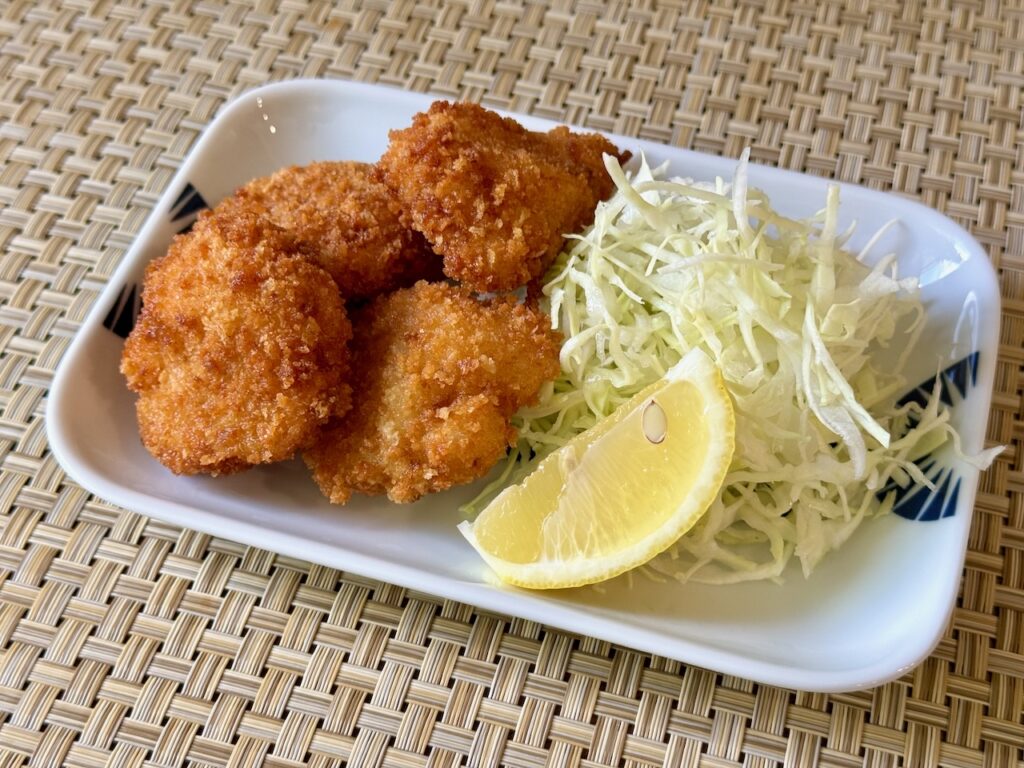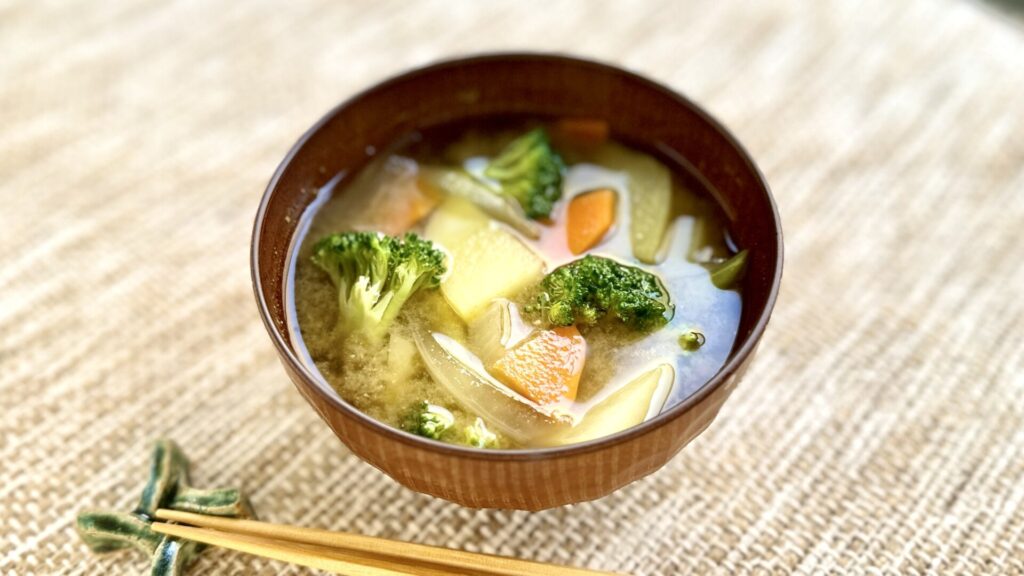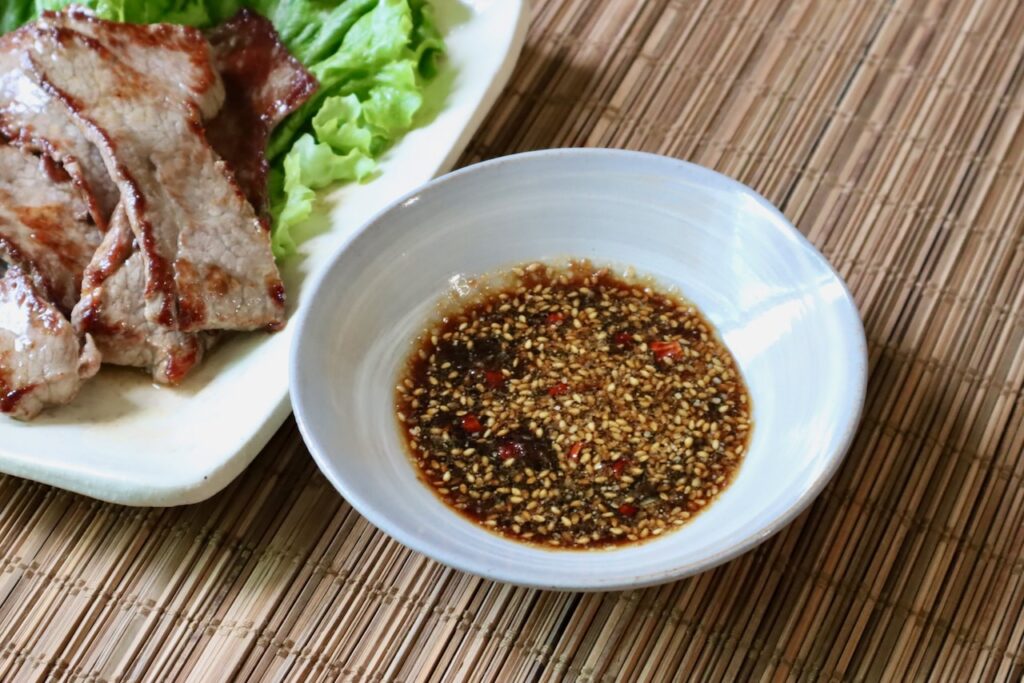Onsen Tamago (温泉卵) is soft and silky semi-cooked eggs, and often used as a delightful topping for donburi rice bowl dishes, noodles, or simply eaten on its own with soy sauce or Mentsuyu. Typically, these eggs are made by gently heating them in warm water resembling hot springs. The eggs are placed in the water without cracking their shells and are slowly heated over time. The resulting eggs have tender whites and a gooey semi-cooked yolk. Today, onsen tamago enjoys popularity both in Japan and abroad.
Onigiri with Fried Onions is a simple treat made with store-bought fried onions seasoned with a soy sauce mixture (or Mentsuyu), mixed in rice, and shaped into triangular onigiri. Many of you may already have fried onions in your pantry from holiday use, making this a great way to recycle the ingredient. When the fried onions are flavored in the sauce, they taste almost like tempura (yum!). And, of course, they pair perfectly with steamed rice. This dish makes for an easy lunch to bring to work or a tasty after-school snack. It’s seasoned enough, but feel free to add a little salt to taste. Enjoy it as naked onigiri or wrap it with nori roasted seaweed. If you’re feeling lazy, you can simply enjoy the mixed rice as is. Hope you like it!
Today’s miso soup features Wakame seaweed and eggs. This may be our easiest and quickest miso soup yet. Wakame doesn’t need to be rehydrated; it can be added directly to the Dashi, and it will soften in the soup. Eggs add good protein and substance to this miso soup, and they’ll be cooked in no time. This is a perfect miso soup for breakfast or a busy weeknight dinner. Hope you give it a try!
Swiss Roll Cakes are popular Western-style desserts in Japan made by rolling thinly baked sponge cake and filling it with cream, jam, or fruit. Roll cakes are enjoyed on various occasions such as celebrations, parties, or even everyday teatime. They not only have a pretty looking swirl but are also delicious and relatively easy to make at home, especially after a couple of practice rounds.
Kitsune Soba is cooked soba noodles in savory Dashi based broth topped with sweet and salty Aburaage fried tofu. Kitsune means “fox” in Japanese, but this dish has nothing to do with the animal. Kitsune Udon with large slices of fried tofu is more common, but here we use soba noodles instead of udon, and we cut the Aburaage thinly and simmered with sliced green onions. Warm noodle soup with sweet and salty fried tofu is so flavorful and comforting. This is a perfect lunch food on any day!
We are excited to announce that we now have our own Japanese Cooking 101 Store on Amazon.com where we post and curate our favorite things in the kitchen! It’s still work in progress as of today, but we are planning on posting our honest product review videos and photos regularly and adding more items to our idea lists. While we do get small commissions from the sales, we only list items that we actually use and like. While we try to be informative and honest when reviewing products, chances are that you have already seen the actual products used in our recipes anyway such as 365 by Whole Foods Market Panko Bread Crumbs (#ad) in our recent recipe: Deep-Fried Sea Scallop.
Deep-fried sea scallops (Hotate in Japanese) are large sea scallops breaded with Panko crumbs and deep-fried, renowned for its crispy coating and juicy, sweet interior, commonly savored in izakaya bars and seafood restaurants across Japan.
Crispy Shokupan Crusts are fried bread crusts coated with sugar. They are not the healthiest, but they’re a cheap and delicious homemade snack. Many of us make sandwiches at home and cut off the crusts from the bread and throw them away. Next time you make sandwiches, save those crusts! Simply deep-fry the bread until nice and crispy, coat with sugar, and that is it. If you want flavor twists, add some cinnamon or Kinako (soybean flour) to the sugar. To avoid the bread becoming greasy, deep-fry at a higher temperature. But be careful not to burn it at the same time. Fry the crusts, stirring constantly until they’re nicely browned and light. Eat them while still warm; they are absolutely delightful! Hope you give it a try!
Today’s miso soup is made with vegetable broth. You can clean out any leftover vegetables from your fridge, cooking them in convenient store-bought broth. Then, season with the miso paste of your choice to create an easy-to-make, tasty miso soup for any time of day. Even without dashi, this miso soup offers plenty of umami flavor and a touch of natural sweetness from the vegetables and broth. The only thing you need to be careful about is adjusting the amount of miso paste depending on the type of vegetable broth you use. Many store-bought broths contain sodium, so add the miso paste gradually to avoid it becoming too salty. Other than that, this healthy miso soup is great because it’s not only delicious but also incredibly nourishing. Plus, all the ingredients can be found locally without a trip to the Japanese market. Vegetarian and vegan-friendly too. I hope you give this a try!
Yakiniku sauce, a dipping sauce for Japanese BBQ, is a soy sauce-based sauce infused with rich flavors of garlic, sesame, and other spices. It serves as a fantastic accompaniment for Teppanyaki meats and vegetables, Yakiniku BBQ, and beyond. It’s almost like a multi-purpose sauce that can elevate many dishes such as stir-fried vegetables, salads, and simple pan-fried meats. Having Yakiniku BBQ Sauce in your Japanese pantry ensures that your dishes will consistently taste delicious without the need to adjust or match many different seasonings.
